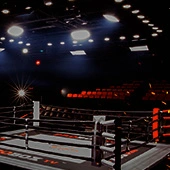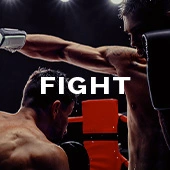By Cliff Rold
It’s not just another fight. Since winning their first world titles in 1998, Mayweather and Pacquiao have developed into the defining faces of their generation. When they square off on Saturday night, there will be three Welterweight belts on the line.
There will also be plenty of history up for grabs.
Over the course of this series, each man’s fights from first title win to the present day was examined with an eye on who they fought and where those fighters were regarded going into the fight.
Previous Installments
On the eve of their long awaited clash, let’s take a deeper look at the various accomplishments of both men and break down the numbers, hopefully in ways some may not yet have considered.
We begin with the history that might be at hand.
Historical Stakes
The fight is already making history at the box office. On Saturday, we could see some very unique history in the ring. Entering Saturday, Pacquiao and Mayweather are the first two fighters in the history of boxing to win historical titles in four separate weight classes, as outlined in the chart below.
There is debate about Mayweather’s position as the current lineal champion at Welterweight in what would be his second such reign. BoxingScene, Ring Magazine, and the Cyber Boxing Zone all recognize Mayweather as the proper current king at 147 lbs. The Transnational Boxing Rankings Board does not but rates them as 1 (Mayweather) and 2 (Pacquiao).
The winner of this bout, with apologies to IBF titlist Kell Brook, will be the undisputable champion of the division. Further, they will cement their place as the defining Welterweight of the last decade.
If that man is Pacquiao, he will break the record of lineal titles in four weight divisions that he first set with a knockout of Ricky Hatton in 2009.
More than that, as noted in the first chapter of this series, Pacquiao would be only the third man to win lineal crowns in three of boxing’s storied ‘original eight’ weight divisions, joining Bob Fitzsimmons (Middleweight, Light Heavyweight, Heavyweight) and Henry Armstrong (Featherweight, Lightweight, Welterweight).
The ‘original eight’ are Flyweight, Bantamweight, Featherweight, Lightweight, Welterweight, Middleweight, Light Heavyweight, and Heavyweight.
While there have been others to win titles in three of those divisions like Roberto Duran, Thomas Hearns, and Roy Jones, none since Armstrong have held the historical crown in all of them.
Pacquiao would also become the first former Featherweight Champion since Armstrong to win the Welterweight crown. Pacquiao is already the only former lineal Flyweight Champion to win those honors at Featherweight.
There will be ample debate about where his feat rates next to Fitzsimmons and Armstrong should Pacquiao pull off the upset. Consider this for perspective: Fitzsimmons and Armstrong won titles in consecutive divisions. Pacquiao would have done it across a span of five of the ‘original eight,’ skipping over Bantamweight and Lightweight.
There is a chance Sunday we could be discussing Pacquiao as the greatest winner of championships ever.
Stocked Trophy Cases
In terms of sanctioning body titles, Mayweather has an opportunity to win the only one of the four most recognized belts in the Welterweight division currently missing from his dossier. He currently holds the WBC and WBA belts and briefly held the IBF title in 2006. The next chart details their various reigns over the years.
Working Through The Obstacles
Part of what adds to the allure of this fight is the success each man has had against other titlists and champions in their era. Floyd has faced more men who have held titles. Pacquiao has had more fights against them. The timeline provided highlights these victories, with title wins in bold and underlined.
Breaking Down the Championship Years
Using Ring Magazine’s ratings as a guide, the quality of both men’s competition has been highlighted throughout this series. Ring Magazine was selected, and maintained, due to its consistency over the entire time period. While no media ratings are perfect, they provide a reasonable gauge of perceived merit at the time of fights.
The ratings of their opponents were totaled and then averaged both in general and by divisions. In cases where they were facing a fighter unrated by Ring Magazine, a universal score of 11 was applied.
These numbers only tell a part of the story. On multiple occasions, Mayweather and Pacquiao participated in fights against men rated in divisions above or below the division they were competing in.
Some readers will find interesting their mirroring numbers in terms of opponent winning percentage from their first title win forward. In each category, Mayweather has the edge in the average Ring rating of his opponents. Pacquiao fighting more non-title fights explains some of that in the overall numbers.
Both Mayweather and Pacquiao have competed, and won titles, in all five divisions from 130 to 154 lbs. The volume of work they did in two particular divisions bears direct comparison.
Floyd had more than nine fights at Jr. Lightweight. It’s where he developed early in his career. The essential fights begin with his first title win over Hernandez. Mayweather is often rated among the best Jr. Lightweights of all time and the numbers here show part of why. He defeated two number one’s in Hernandez and Corrales and a number two in Angel Manfredy.
Pacquiao has the edge in average opponent rating, but two of his rated foes came from Jr. Featherweight (Larios) and Featherweight (Jorge Solis). Mayweather fought five separate top ten contenders at 130 while Pacquiao fought three with three fights against Morales.
Worth thinking about at 130 lbs. is where each man’s best opponents were coming from. Pacquiao defeated the three highest rated men in the division aside from himself in Morales, Barrera, and Marquez. All three won their first titles in lighter classes. Hernandez and Corrales won their first titles at Jr. Lightweight.
Marquez and Corrales both went on to win the Lightweight title. Marquez and Morales also both won belts at Jr. Welterweight. Both Hernandez and Barrera were nearing the end when they faced Mayweather and Pacquiao respectively at Jr. Lightweight.
It’s difficult to say whether the size question means much. It’s easy to envision Hernandez, Corrales, Morales, Barrera, and Marquez all picking up wins and losses against each other at Jr. Lightweight. It’s also not hard to envision Mayweather and Pacquiao beating each other’s best foes in the division.
Jr. Lightweight was an exceptional weight class for both men. Mayweather’s unbeaten mark might be their strongest point of delineation.
The same could also be said about Welterweight but Mayweather has some other points in his favor compared to Pacquiao.
Both men have had exactly ten fights in the Welterweight division. Mayweather has faced more men rated at Welterweight over the course of those fights. Both men fought Juan Manuel Marquez once apiece when he was the recognized Lightweight Champion of the World; Pacquiao also fatefully fought him again after Marquez had vacated that crown and moved to Jr. Welterweight. Mayweather has not faced an opponent at Welterweight who was rated in another division since Marquez in 2009.
Of the five opponents Pacquiao faced at Welterweight who were rated in another division, four (Marquez, Bradley, Rios, Algieri) were rated below Welterweight when he faced them. Pacquiao has faced only one rated Welterweight since defeating Shane Mosley in 2010: Timothy Bradley in the 2014 rematch.
Here is how the numbers break down in the other divisions both men have competed in during the time period considered.
Mayweather – Additional Numbers by Division (Oct. 1998-Present)
Lightweight
Total Fights: 5
• Title Fights: 4
Record: 5-0, 2 KO
• Title Fights: 4-0, 1 KO
Opponent W/L Record: 179-28-8, 149 KO
• In Title Fights: 157-12-4, 139 KO
Opponent Winning Percentage: .85
• In Title Fights: .92
Opponent Knockout Percentage: .69
• In Title Fights: .80
Vs. Opponents Rated in Ring Magazine: 3
• Rated at Lightweight: 2
Average Opponent Rating in Ring Magazine: 4.25
Jr. Welterweight
Total Fights: 3
• Title Fights: 1
Record: 3-0, 2 KO
• Title Fights: 1-0, 1 KO
Opponent W/L Record: 88-10-2, 59 KO
Opponent Winning Percentage: .89
Opponent Knockout Percentage: .59
Vs. Opponents Rated in Ring Magazine: 2
Average Opponent Rating in Ring Magazine: 5.7
Jr. Middleweight
Total/Title Fights: 4 (Including joint 147/154 lb. defense, September 2014)
Record: 4-0
Opponent W/L Record: 152-10-1, 121 KO
Opponent Winning Percentage: .94
Opponent Knockout Percentage: .74
Vs. Opponents Rated in Ring Magazine: 4
• Rated at Jr. Middleweight: 3
Average Opponent Rating in Ring Magazine: 4.25
Pacquiao – Additional Numbers by Division (Dec. 1998-Present)
Flyweight
Total/Title Fights: 3
Record: 2-1, 2 KO, 1 KOBY
Opponent W/L Record: 70-8-1, 50 KO
Opponent Winning Percentage: .89
Opponent Knockout Percentage: .63
Vs. Opponents Rated in Ring Magazine: 1
Average Opponent Rating in Ring Magazine: 7.7
Note: Pacquiao also had a knockout non-title win weighing 116 lbs. in this period.
Jr. Featherweight
Total Fights: 11
• Title Fights: 5
Record: 10-0-1, 10 KO
• Title Fights: 4-0-1, 4 KO
Opponent W/L Record: 330-36-10, 220 KO
• In Title Fights: 166-15-4, 105 KO
Opponent Winning Percentage: .89
• In Title Fights: .92
Opponent Knockout Percentage: .59
• In Title Fights: .57
Vs. Opponents Rated in Ring Magazine: 2
Average Opponent Rating in Ring Magazine: 10.1
Featherweight
Total Fights: 4
• Title Fights (Inc. Lineal): 3
Record: 3-0-1, 3 KO
• Title Fights: 2-0-1, 2 KO
Opponent W/L Record: 159-17-2, 104 KO
• In Title Fights: 142-12-1, 96 KO
Opponent Winning Percentage: .89
• In Title Fights: .92
Opponent Knockout Percentage: .58
• In Title Fights: .62
Vs. Opponents Rated in Ring Magazine: 2
Average Opponent Rating in Ring Magazine: 5.75
Lightweight/Jr. Welterweight/Jr. Middleweight
Total/Title Fights: 3 (One in Each Division)
Record: 3-0, 2 KO
Opponent W/L Record: 117-8-1, 76 KO
Opponent Winning Percentage: .93
Opponent Knockout Percentage: .60
Vs. Opponents Rated in Ring Magazine: 2
Average Opponent Rating in Ring Magazine: 4.7
What can we learn from these numbers?
One thing that might be taken away is that a stoppage isn’t the most likely outcome for either man this weekend.
Pacquiao’s power was the most threatening from 122-140 lbs. When left the Flyweight division, his record was 26-2 with 17 inside the distance, a 61% stoppage rate. From 122-140, his mark was 22-1-2 with 19 knockouts, a 76% stoppage rate. If one looks exclusively his run from 122-26, Pacquiao was a menacing 13-0-2 with all of the wins by knockout, an 87% finishing mark.
Facing naturally bigger men took the edge off after stoppages in his first two Welterweight fights against De La Hoya and Cotto. At 147 and above, Pacquiao is 9-2 with two knockouts, a rate of 18%.
Mayweather has also seen a steep decline in stoppages as he rose in weight. When Mayweather debuted at Welterweight versus Mitchell, he was 34-0 with 23 stops, 68% of his fights ending inside the distance. While Mitchell ended up a knockout win, Mayweather’s overall record at 147 and above is 13-0 with three knockouts, a rate of 23%.
It doesn’t mean both can’t still hurt a foe. Pacquiao has had knockdowns in fights against Mosley, Marquez, and Algieri. Mayweather stunned Cotto late in their Jr. Middleweight fight and, with some debate, knocked out Victor Ortiz in 2011. There is a notable gap between hurting and finishing once both got to Welterweight.
Based on Ring ratings, Pacquiao has defeated the top rated, or next top rated fighter after him at 112, 126, 130, and 140. Mayweather did the same at 130, 135, 147, and 154. Arturo Gatti was rated #1 at 140 when Mayweather defeated him, but that was a notch below then-recognized champion Ricky Hatton. Mayweather defeated Hatton at Welterweight when both were the undefeated champions of their divisions.
Both men have engaged in catchweight fights, but it’s an overstated issue for both. Pacquiao brought Cotto and Margarito down to catchweights and gave up weight for the third Marquez fight. His win over De La Hoya was technically not a catchweight. They fought at the Welterweight limit with De La Hoya moving down one class and Pacquiao moving up two.
Mayweather-Alvarez was a catchweight contest at Jr. Middleweight. The overwhelming majority of each man’s career has been contested at the limit of the divisions where their fights took place.
A big element of the build to Mayweather-Pacquiao is Pacquiao’s threat to Mayweather’s undefeated record. In terms of undefeated opponents, both have had success during their championship years. Mayweather has defeated three undefeated fighters since defeating Hernandez: Corrales, Hatton, and Alvarez. Pacquiao has defeated six undefeated fighters since defeating Sasakul: Seung Kon-Chae, Nedal Hussein, Emanuel Lucero, Jorge Solis, Bradley and Algieri.
Both have also had success in handing opponents their first loss by knockout during the portions of their careers considered in this series. Pacquiao was the first man to stop Sasakul, Chae, Hussein, Tetsutora Senrima, Julio, Lucero, Barrera, Fahsan 3-K Battery, Morales, and Solis. Mayweather was the first to stop Corrales, Jesus Chavez, and Hatton.
They share five common foes: Marquez, De La Hoya, Hatton, Cotto, and Mosley. Of the five, Mayweather fought three (De La Hoya, Hatton, and Mosley) first. Pacquiao fought Marquez twice before, and twice after, Mayweather-Marquez. Both men stopped Hatton and went the distance with Mosley. Mayweather won decisions over De La Hoya and Cotto while Pacquiao stopped both.
Styles making fights, common opponents can often be misleading as a gauge of outcomes between elite battlers. Mayweather appeared more impressive against Marquez and Mosley; Pacquiao was more impressive against Cotto. Circumstances, timing, and the victor’s performances leave room for ample debate as to who was more impressive against Hatton or De La Hoya.
There are surely more angles by which all of these numbers can be digested, debated, and analyzed. Ultimately, the only analysis that really matters at this point will reveal itself in the ring.
That begs the biggest question of all: who wins on Saturday night?
To be continued tomorrow with the pre-fight report card…
Special Thanks: Thank you to Springs Toldeo and Carlos Acevedo for their invaluable assistance in researching historical ratings through the back issue piles of Ring Magazine. Toledo can be read at The Sweet Science, Acevedo at The Cruelest Sport and UCN.
Research Note: Records compiled with the use of www.boxrec.com
Cliff Rold is the Managing Editor of BoxingScene, a founding member of the Transnational Boxing Rankings Board, and a member of the Boxing Writers Association of America. He can be reached at roldboxing@hotmail.com


